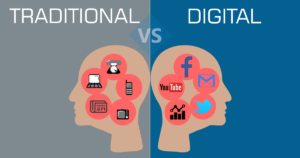In the realm of marketing, understanding human behavior is crucial for creating campaigns that resonate with your target audience. Behavioral psychology offers valuable insights into how people think, feel, and act, which can be leveraged to drive marketing success. By applying principles of behavioral psychology, marketers can craft strategies that influence consumer behavior, enhance engagement, and ultimately boost sales. Here are some key ways to use behavioral psychology to drive marketing success.
1. Understanding the Power of Social Proof Marketing
a. Leverage Testimonials and Reviews
People tend to follow the actions of others, especially when they are uncertain about a decision. This is where social proof comes into play. Including customer testimonials, reviews, and ratings on your website and marketing materials can significantly influence potential customers’ decisions. Showcasing positive experiences from real customers builds trust and credibility, making new customers more likely to engage with your brand.
b. Highlight Popular Products
Highlighting best-selling or popular products can also leverage social proof. When consumers see that others are buying and enjoying a product, they are more likely to consider purchasing it themselves. Use phrases like “Most Popular” or “Best Seller” to draw attention to these items.
2. Utilizing the Scarcity Principle of marketing
a. Create Urgency
The scarcity principle suggests that people are more likely to act when they perceive something as being in limited supply. Creating a sense of urgency can drive marketing success by encouraging consumers to make quicker decisions. Limited-time offers, flash sales, and countdown timers are effective ways to communicate scarcity and prompt immediate action.
b. Highlight Limited Availability
Emphasize the limited availability of certain products or services. Phrases like “Only a Few Left in Stock” or “Exclusive Offer” can create a fear of missing out (FOMO), motivating customers to purchase before it’s too late.
3. Applying the Reciprocity Principle
a. Offer Freebies and Samples
The reciprocity principle is based on the idea that people feel compelled to return favors. Offering freebies, samples, or valuable content can create a sense of obligation in potential customers to reciprocate by making a purchase or engaging with your brand. This strategy not only drives initial engagement but also builds goodwill and trust.
b. Provide Value Through Content
Creating valuable and informative content is another way to leverage reciprocity. By offering free resources such as e-books, guides, or webinars, you can attract and engage your audience. When consumers perceive your brand as helpful and generous, they are more likely to support you in return.
4. Using Emotional Appeals
a. Tell Compelling Stories
Emotions play a significant role in decision-making. Crafting compelling stories that resonate with your audience’s emotions can drive marketing success. Use narratives that highlight customer success stories, brand values, or the impact of your products. Emotional storytelling can create a deeper connection with your audience and make your brand more memorable.
b. Use Visual and Sensory Marketing
Visual and sensory elements can evoke emotions and enhance the overall impact of your marketing campaigns. High-quality images, videos, and even interactive content can capture attention and elicit emotional responses. Colors, music, and other sensory cues can also be strategically used to influence mood and perception.
5. Implementing the Consistency Principle
a. Encourage Small Commitments
The consistency principle suggests that people are more likely to follow through with larger commitments if they have first made smaller ones. Encourage potential customers to make small, low-risk commitments, such as signing up for a newsletter, downloading a free resource, or participating in a free trial. Once they have taken these initial steps, they are more likely to continue engaging with your brand and making larger commitments, like purchasing a product.
b. Reinforce Brand Identity
Ensure that your brand messaging is consistent across all platforms and interactions. A strong and consistent brand identity helps reinforce consumer trust and loyalty. When customers encounter consistent messaging, they are more likely to develop a strong association with your brand and feel confident in their decision to engage with it.
Conclusion
Leveraging behavioral psychology in marketing can significantly enhance your ability to connect with consumers, influence their decisions, and drive success. By understanding and applying principles such as social proof, scarcity, reciprocity, emotional appeals, and consistency, marketers can create more effective and impactful campaigns. These strategies not only help in attracting and retaining customers but also in building a strong and trustworthy brand. As the marketing landscape continues to evolve, incorporating behavioral psychology into your strategies will be key to staying ahead and achieving long-term success.





Keep up the fantastic work! Kalorifer Sobası odun, kömür, pelet gibi yakıtlarla çalışan ve ısıtma işlevi gören bir soba türüdür. Kalorifer Sobası içindeki yakıtın yanmasıyla oluşan ısıyı doğrudan çevresine yayar ve aynı zamanda suyun ısınmasını sağlar.
Hmm is anyone else having problems with the pictures on this blog loading? I’m trying to find out if its a problem on my end or if it’s the blog. Any responses would be greatly appreciated.
Everything is very open and very clear explanation of issues. was truly information. Your website is very useful. Thanks for sharing.
This really answered my problem, thank you!
Hey there just wanted to give you a quick heads up. The text in your article seem to be running off the screen in Firefox. I’m not sure if this is a format issue or something to do with internet browser compatibility but I thought I’d post to let you know. The style and design look great though! Hope you get the problem resolved soon. Cheers